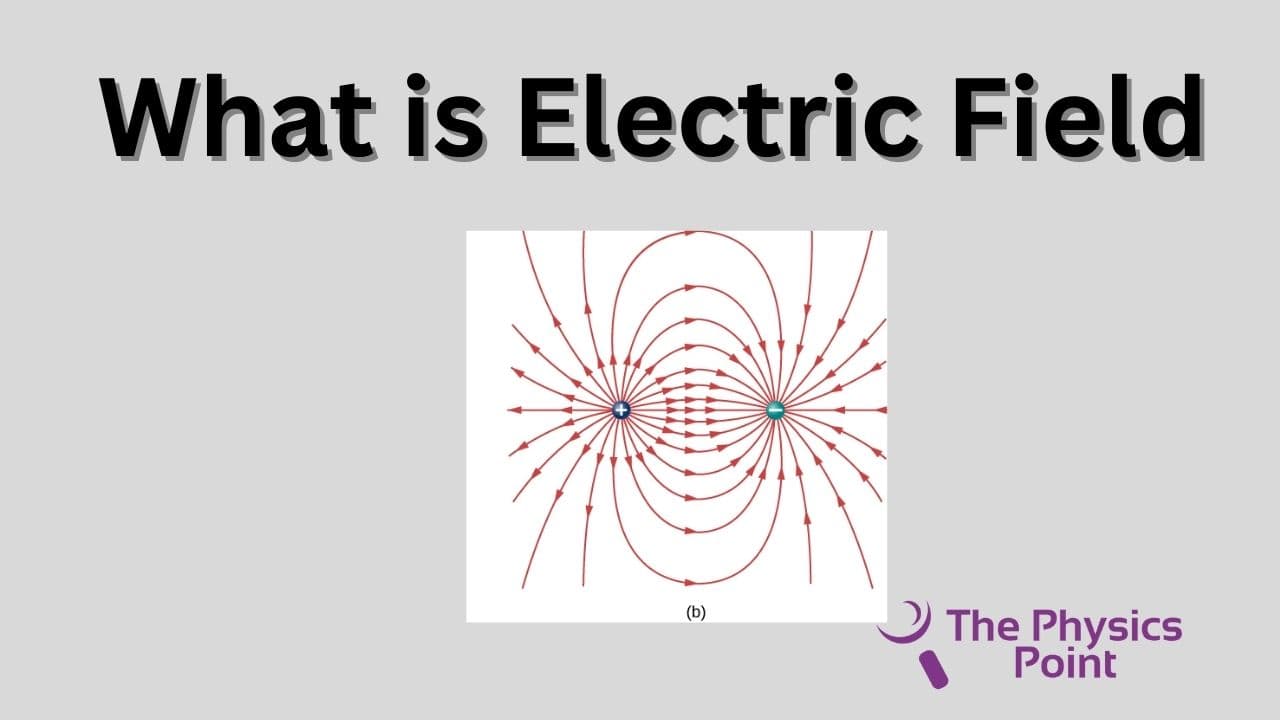What is Electric Field? Definition, Unit, Formula, Examples

Hello students and readers of the Physics website, how are you? hope you all are fine and doing well today. We are discussing another interesting topic of electrostatic what is the electric field this is one of the most important topics from the point of view of examination of board and other competition also we will try to clarify your every concept about the electric field and its connection points in the previous article we discussed about the Coulomb’s law you can also go through that article from our website to make your understanding very clear in the electrostatics. You can also read other articles on Physics posted on our website.
the important question which we are going to discuss today such as what is electric field, Electric field definition, What is electric fields physics, define electric field definition in physics, draw the electric field line diagram, give electric field lines examples, etc. Read the whole article from start to end so that a single point of concept must not be missed from your understanding let’s start our article without any time consumed.
What is Electric Field (Definition)?
This is a physical field that surrounds an electric charge in which another charge exerts a force. We can also say that an electric field is a property of a charge. If any charged object comes under the field of any other charged object it feels the force of repulsion or attraction that can be measured by Coulomb’s law.
The direction of the electric field is in the direction of force acting on the positive charge but in the case of a negative charge the direction of the electric field is reversed. for the positive charge electric field lines outwards radially but for the negative charge, the electric field lines come to the negative charge radially.
The formula for electric field strength is given below
E = F/Q
Here,
- E represents the electric field
- F represents the force acting on any charge
- Q Is representing the charge
By the above formula, we can easily say that the electric field is measured as the force acting on the unit charge. The electric field can also be produced by changing the magnetic field or we can say that variable magnetic field electric field is produced by itself. To find the electric field we can use the Gaus law.
SI unit of the electric field strength is N/C (Newton/Coulomb) or Volt/meter
How to measure an electric field with the help of Gauss law?
It is a law that helps us to find the electric field for any reason where a charge exists. You have to follow some steps to find the electric field which is given below-
- The very first step is to find the spatial organization or symmetry of charge distribution. It means we have to find out whether the charge is spherical, cylindrical, or planar.
- In the next step, we need to find a symmetrical Gaussian surface just like same as that of the arrangement of charges.
- Now we have to find the integral in the Gaussian surface and after we have to find the flux.
- After that, we have to find how much charge is enclosed by the Gaussian surface.
- Now in the last step put every value in the integral formula and find out the electric field of their charge distribution or the electric field due to a point charge.
The Gauss formula is given below –
E.ds = 1/εo Q
Applications of electric field (Examples)
1. Electric field due to a charged Rod
Here we use the Gauss law to find out the electric field magnitude and direction due to a charged rod.
Consider a linear straight road with positively charged and the linear charge density is Lambda (λ).
we will find the electric field intensity at point P which is perpendicular to the rod. The Separation is r between the point and the road. Now consider the circular cylindrical Gaussian surface of radius r and length l in which a long charged rod lies on its axis. Now from the given equation, we can understand how the curved surface of the cylindrical surface contributes to the electric flux-

The area of the curved surface of the cylinder is 2 Π rl
At both ends of the cylinder, the angle made by the electric field, and area vector is 90 degrees. So the base of the cylinder contributes no effect to the electric flux.
Charge enclose by cylinder = linear charge density of rod × length = λ l
According to the Gauss law,
ϕ E = q/ εo,
E(2 Π rl)= λ l/ εo,
E= λ /(2 Π εor),
In all the above calculations the electric field is coming out that is equal to E= λ /(2 Π εor)
2. Electric field due to ring on its axis

The electric field intensity on the axis of the ring at the distance r is given below and the direction of this electric intensity is away from the point H.
E = Qr/4εo(a2+r2)3/2
At the center of the ring, r is equal to zero so according to the formula the electric field intensity is also zero at the center of the Ring.
Electric Field at the center of ring = 0
The Conclusion
In today’s article, we discussed everything about the electrical field and also give examples with formulas. We have discussed what is electric field, electric field lines, Electric field units, and many other important questions in very easy words. Still, if you have any queries or suggestions please ask us in the comment box, and we will try to reply to you at soon as possible. For a better understanding of Physics stay tuned with us and read by article daily thank you!
